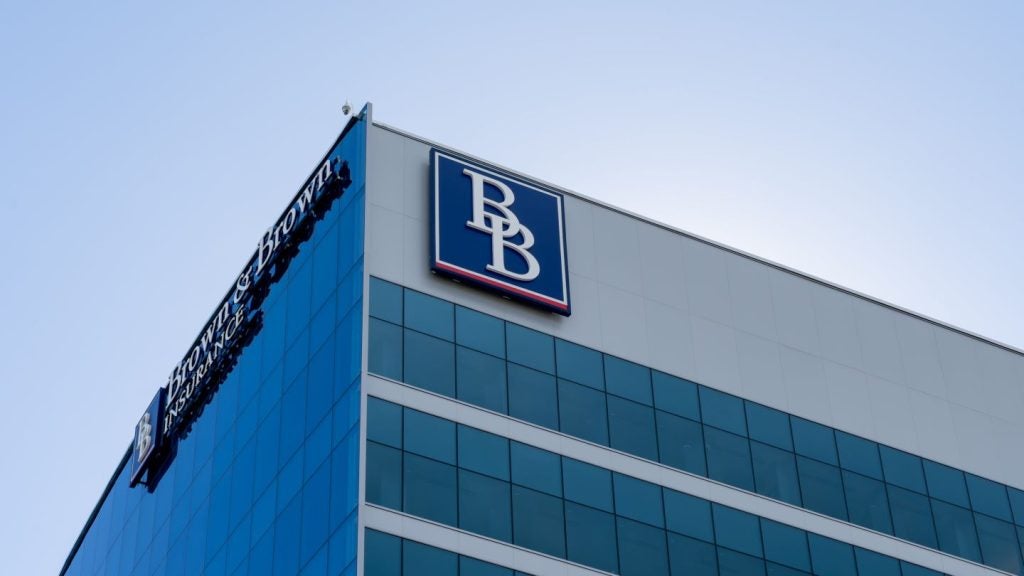With a three-decade-long
civil conflict behind it, Sri Lanka is on a rapid recovery path,
boosting its GDP to among the highest in the world. For life
insurers this has brought with it robust premium income growth
which looks set to continue in a market that has one of Asia’s
lowest penetration rates.

Access deeper industry intelligence
Experience unmatched clarity with a single platform that combines unique data, AI, and human expertise.
 Overshadowed by
Overshadowed by
life insurance industries in large developing Asian countries, Sri
Lanka’s receives little attention in the general media. However,
small as it may be Sri Lanka’s life industry is a flourishing one
with significant growth potential.
Last year was a particularly
good one for the majority of the country’s 14 life market
participants. Insurance industry regulator the Insurance Board of
Sri Lanka (IBSL) reported that gross premium income soared by 31.1%
compared with 2009 to reach a record LKR31.151bn
($284m).
There are 19 insurance
companies in Sri Lanka, of which 12 are composite insurers. Of the
remaining seven, two offer only life insurance and five offer only
general insurance.
The premium income growth
rate achieved in Sri Lanka’s life sector in 2010 was the highest in
five years and brought the CAGR over the period to 16% and over the
previous 10 years to 17.5%. This solid growth pace over five and 10
years was achieved despite the impact of the global financial
crisis which slowed growth in life premium income in the country to
a mere 0.65% in 2009.

US Tariffs are shifting - will you react or anticipate?
Don’t let policy changes catch you off guard. Stay proactive with real-time data and expert analysis.
By GlobalDataFor much of the past decade,
Sri Lanka was also a country that experienced huge internal turmoil
resulting from an armed conflict between the government and Tamil
separatist organisation the Tigers of Tamil Eelam (LTTE). The
conflict erupted in 1983 and notwithstanding a ceasefire brokered
by Norway in 2002 continued until May 2009 when the Sri Lankan
government declared that it had comprehensively defeated the
LTTE.
Despite the civil war, Sri
Lanka’s annual GDP growth rate during the war years averaged around
5%, rising to about 7% between 2006 and 2008. According to a report
published by the US State Department in April 2011, the global
economic crisis and an escalation of violence during the final
stages of the war resulted in a slowdown in GDP growth in 2009 to
3.5%. However, there was a strong rebound in 2010 with GDP growth
of 9.1% recorded.
Sri Lanka’s performance
during the financial crisis was commended by the International
Monetary Fund (IMF) which noted that this “signalled substantial
resilience to shocks, including shocks to oil prices”.
Further highlighting the
country’s potential, the State Department predicts in its report:
“Sri Lanka’s economy will continue its post-war resurgence and is
expected to grow strongly in the immediate term.”
The Sri Lankan government’s
objective under its Mahinda Chintana plan is to double the
country’s per capita income to $4,000 within six years. To achieve
this objective, the State Department noted that it will require
annual GDP growth of well over 8% and for Sri Lanka to increase its
investment rate from 25% of GDP to 35% of GDP.

Evolution of an
industry
Sri Lanka’s domestic insurance
industry has its origins in the Companies Act of 1938 which
facilitated the formation of the country’s first life insurer
Ceylon Insurance Company in 1939. However, expansion of the private
life insurance sector came to an abrupt end in 1961 when a decision
was taken by the government to allow only one state-owned insurer
to operate in the country’s life sector. At the time this decision
was taken there were some 60 foreign and domestic life and general
insurers and agencies operating in the country.
Nationalisation saw the
establishment of Sri Lanka Insurance Corporation (SLIC) in 1961,
which in 1964 also became the country’s sole operator in the
general insurance sector. After almost two decades as the sole
insurer in Sri Lanka, SLIC was joined in 1980 by another
state-owned composite insurer National Insurance
Corporation.
The door to private insurers
was again opened in 1986 and within the next three years three
private insurers were established, including Ceylinco Insurance
which was effectively a resurrection of Ceylon Insurance Company.
Ceylinco commenced business in January 1988 and has grown to become
the biggest player in the life sector, holding a 28.2% market share
in 2010, according to the IBSL.
In the general insurance
sector, Ceylinco’s market share of 24.7% in 2010 made it a marginal
second-runner to the still state-owned SLIC which held a 24.8%
market share.
Aviva NDB
booms
In the life sector, SLIC was
ousted from second position in 2010 by Aviva NDB Insurance which
achieved a 68% increase in premium income in 2010 to LKR7.78bn.
Aviva NDB’s growth in premium income in 2010 was the second-highest
in the industry and gave it a market share of just under 25%, up
from 19.5% in 2009.
Aviva NDB reported that
growth in 2010 was predominantly driven by a four-fold increase in
linked business which accounted for 52% of its total premium
income. The rise in linked business was fuelled by the strong
performance of the equity market which saw the Colombo Stock
Exchange’s benchmark all-share index record a 96% rise in 2010.
Aviva NDB benefited from being only one of three players in Sri
Lanka’s relatively new unit-linked segment.
A composite insurer, Aviva
NDB was established in 1988 as Eagle Insurance. Aviva and NDB, one
of the largest financial conglomerates in Sri Lanka, became the
insurer’s two largest shareholders in February 2006 with stakes of
51% and 41.15%, respectively. Aviva and NDB now control Aviva NDB
through a holding company, Aviva NDB Finance Lanka (Private)
Limited, in which they have a combined stake of 87.27%.
The name Aviva NDB was
adopted in February 2010 as part of a strategy aimed at
transforming its market profile. In Aviva NDB’s 2010 annual report,
its MD Shah Rouf emphasised that results for the year represented a
case of “transformation delivered”.
He added: “We are well on our
way to achieving our stated goal of being number one in life new
business in Sri Lanka.”
Beyond the increase in life
premium income recorded by Aviva NDB in 2010, its other performance
metrics were also excellent. For example, in the general insurance
sector the insurer lifted premium income by 15% to LKR2.85bn. This
growth rate was ahead of the 11.5% average increase recorded by the
sector and lifted Aviva NDB’s market share from 7.5% to 7.6%. Aviva
NDB ranked as the country’s fifth-largest general
insurer.
Across all its operations,
Aviva NDB recorded a 57.3% increase in revenue to LKR15.187bn which
brought the CAGR in revenue since 2006 to 33.3%. Over the same
four-year period, Aviva NDB’s premium income grew at a CAGR of
25.4% while over the 36 months to early-August 2011 its share price
has risen almost three-fold.
In 2010, a profit after tax
of LKR600m and a 30.7% return on net assets were
reported.

Concentration of
power
Sri Lanka’s life market is
dominated by four players – Ceylinco, Aviva NDB, SLIC and Union
Insurance – which held a combined market share of 83.6% in 2010.
The addition of the comparatively distantly placed fifth-largest
insurer Janashakthi Insurance took the market share of the top-five
players to 88.8%.
However, there is some sign
of the remaining nine smaller life insurance players gaining market
share traction. For example, between 2005 and 2010 the nine smaller
life insurance players lifted their combined market share from 9.7%
to 11.2%. Of the major life players SLIC has been the big loser in
terms of market share which has declined steadily from 36.2% in
2000 to 19.3% in 2010.
In a review of the Sri Lankan
insurance market published in March 2011, rating agency RAM Ratings
(Lanka) noted: “We expect the smaller insurers to continue exerting
pressure on their larger peers’ market shares due to their strategy
of lower prices.”
One small player providing
potentially significant competition for the big-five life insurance
players is comparatively recent entrant into Sri Lanka’s insurance
market, Allianz. The European insurer’s wholly-owned unit Allianz
Lanka commenced general insurance operations in Sri Lanka in
January 2005 and life operations in July 2008. Within this
relatively short space of time Allianz Lanka has grown to become
the country’s sixth-largest general insurer in a market of 17
players. In 2010, Allianz Lanka lifted general insurance premium
income by 25.1% compared with 2009 to LKR1.47bn which gave it a
3.9% market share.
In the life sector, Allianz
Lanka set a cracking pace, increasing premium income by 118% – the
highest in the sector – to LKR205m. In the process Allianz Lanka
increased its life market share from 0.4% in 2009 to 0.66% in
2010.
“We are very pleased with the
performance of both our general insurance and life companies,
having surpassed our plan in all areas,” commented Allianz Lanka
CEO Surekha Alles in a release.
Allianz Lanka reported a
profit before tax of LKR221m in 2010, an increase of 40% compared
with 2009.

Regulatory change
ahead
Regulation of Sri Lanka’s
insurance industry is currently undergoing a significant revision
with a view to bringing it more into line with international norms.
Among recent moves was a requirement that all insurance companies
obtain a rating from a recognised rating agency and a shift from a
rules-based regulatory regime to a risk-based regime.
Steps have also been taken to
broaden the scope of investment avenues for insurers, the most
notable of these being the granting of permission to invest in
foreign currencies. According to RAM Ratings (Lanka), foreign
investment is limited to a maximum of 20% of an insurer’s technical
reserves.
Looming large as a major
challenge to most of Sri Lanka’s composite insurers is a
requirement under legislation passed in January 2011 that they
split their general and life insurance operations into separate
legal entities and list them on the Colombo Stock Exchange.
Insurers have four years to execute the separation of life and
general insurance businesses and five years in which to list
them.
The move to split life and
general insurance businesses is not popular with most composite
insurers which through the Insurance Association of Sri Lanka
lobbied unsuccessfully to have the provision dropped. The insurers
argued that it does not make commercial sense to split into smaller
business units.
Most insurers view the
separation of life and general insurance units as one of the
industry’s biggest challenges over the next few years. A potential
compromise mooted by the industry is the formation of holding
companies controlling separately constituted life and general
insurance units.
Notably, Allianz Lanka is the
only insurer structured to meet the new insurance industry
regulatory requirements that dictate the maintenance of separate
business for life and general insurance business.
Low penetration
rate
 Despite the
Despite the
challenges presented by regulatory change, for participants in Sri
Lanka’s life market, large and small, growth prospects appear
significant given that life insurance is still very much a product
neglected by the vast majority of the country’s population. This is
reflected in a number of key indicators including penetration which
has remained largely flat during the past decade, varying from
0.53% in 2001 to a high of 0.61% in 2005 and a low of 0.49% in
2009. Strong growth in 2010 lifted penetration to 0.59% of
GDP.
According to Swiss Re, this
ranked Sri Lanka 14th in Asia in terms of life penetration. In the
general insurance sector, penetration equal to 0.9% of GDP in 2010
ranked Sri Lanka ninth in Asia.
In addition, according to
Swiss Re, the average life premium per capita in Sri Lanka in 2010
was a mere $13.70, a quarter of the $55.70 average premium in India
and in Asia ahead of only Pakistan ($3.20 per capita), Bangladesh
($4.40) and Vietnam ($8.30).
Another notable indicator
provided by the IBSL is that only one in nine people in Sri Lanka
had a life insurance policy at the end of 2010, a level that rose
to just under one in four among members of the country’s workforce.
Also notable is that the life industry’s combined assets at the end
of 2010 of LKR139.6bn represented only 2.1% of the financial
services industry’s total assets.
A particularly optimistic
view of the life insurance sector’s growth potential is held by
Manjula de Silva, MD of composite insurer HNB Assurance, which
ranked seventh in terms of premium income in the general and life
sectors in 2010. De Silva was recently quoted in the Sri Lankan
media as predicting that within the next three to five years the
life insurance sector will overtake general insurance in terms of
premium income.
De Silva also noted that
strong growth in the life sector had been sustained in the first
quarter of 2011. HNB Assurance is a 60%-owned subsidiary of Hatton
National Bank, Sri Lanka’s largest private commercial
bank.
Education of consumers on the
importance of life insurance is also seen as a major factor in
stimulating growth in the industry.
In its 2010 annual report,
Aviva NBD noted: “Changing the mindset of customers by creating the
necessary awareness on the nature of insurance products as offering
long-term benefits and protection and underlining the importance of
continuity with regard to premium payments over the duration of the
policy term would remain an industry challenge. The customers’
mindset is often to think of these products as traditional savings
and investment products together with a retail mindset towards
investment linked insurance products linked to market
indices.”
Aviva NDB also called on the
insurance industry to invest more in creating awareness among
consumers of the need to have retirement plans. Saving for
retirement, explained the insurer, is a new concept for Sri Lankans
who have a culture firmly entrenched with the benevolent support of
the extended family in times of adversity and retirement of aged
parents.
Retirement savings products could well form a new growth
pillar for Sri Lanka’s life industry. This would also be in keeping
with the country’s economic evolution. Indicating solid progress in
this direction, the International Monetary Fund graduated Sri Lanka
from countries eligible for support from Poverty Reduction and
Growth Trust to middle income emerging market status in January
2010.







